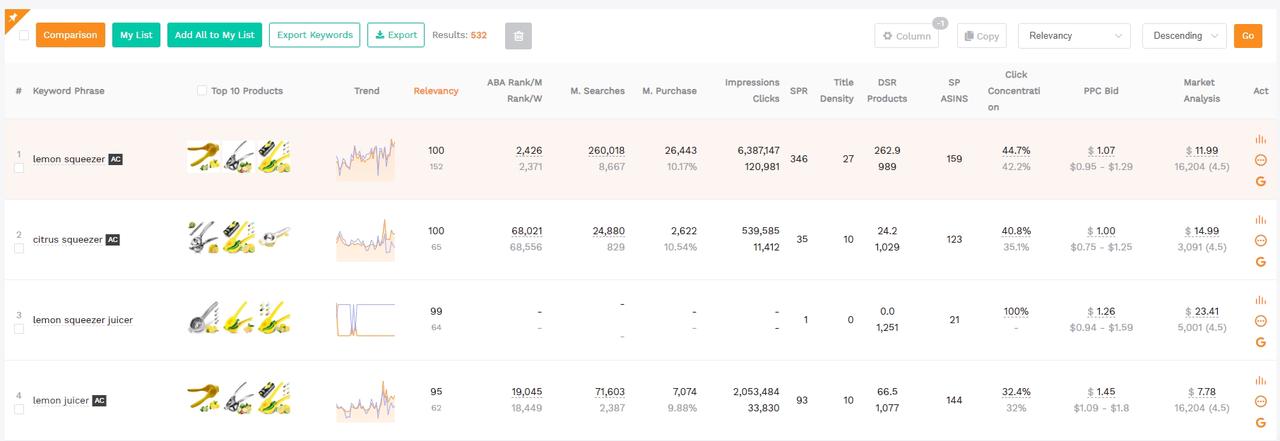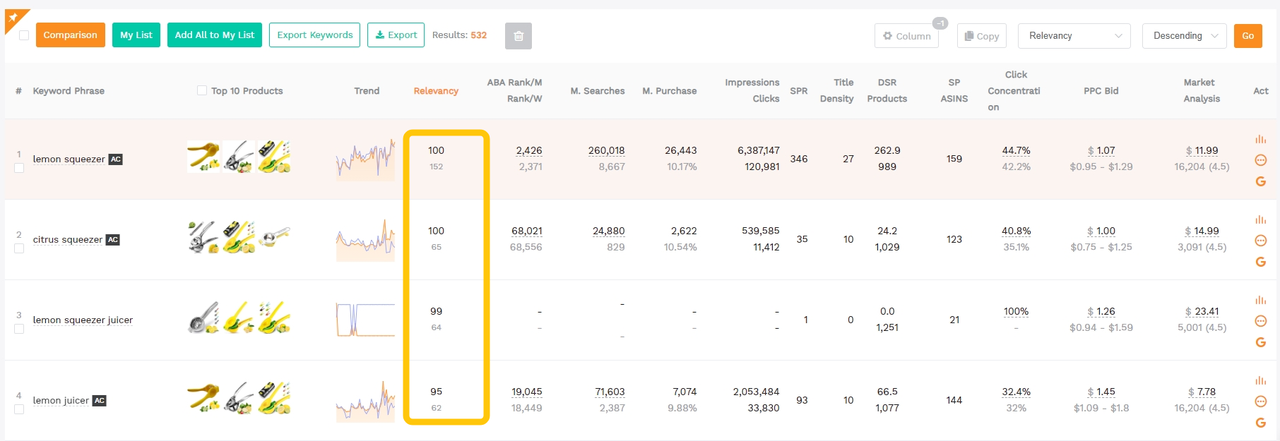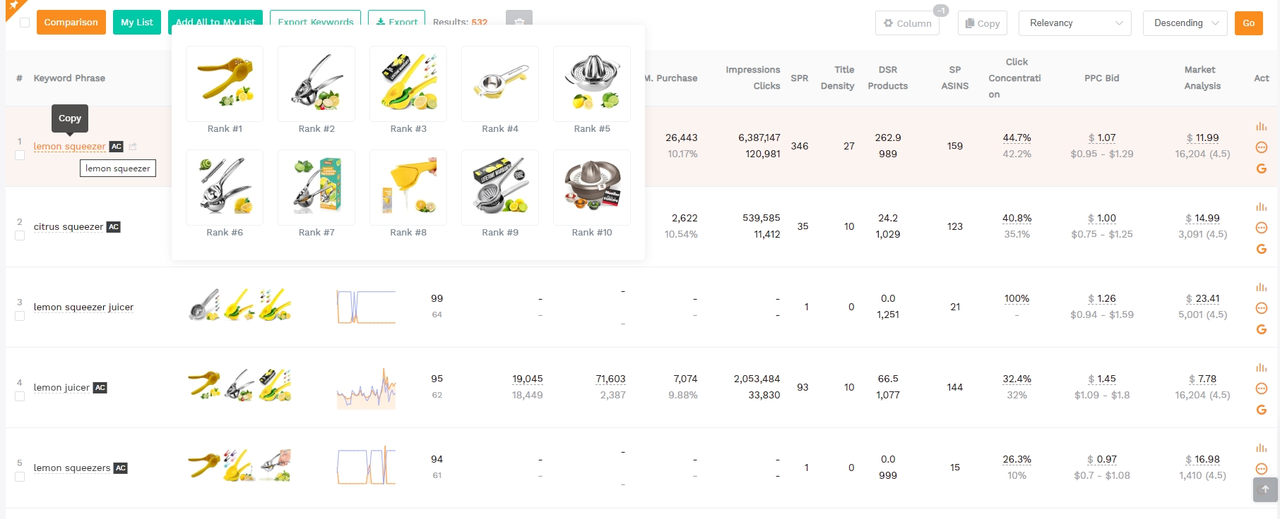Keyword dynamic mining works by precisely positioning a keyword within a specific sub-market (with the same usage scenario and audience), and then uncovering all core keywords that bring traffic (exposure) to that sub-market.
For example, by searching for the keyword "lemon squeezer," we can identify the sub-market it points to: manual juicers. From there, we can unearth traffic-driving keywords for this sub-market (or the same demand scenario, such as users wanting lemon juice), such as "hand juicer" or "lemon juicer."

The search results in dynamic mining are defaulted to be arranged in descending order of relevance. Relevance here represents how closely a keyword is related to the sub-market indicated by the search keyword. It's rated on a scale from 1 to 100, with 100 being the highest and 1 being the lowest.
For instance, when searching for "lemon squeezer," if the top result in dynamic mining is "lemon juicer," it indicates a high relevance between this keyword and the sub-market of manual juicers pointed to by "lemon squeezer."

According to the algorithm rules of SellerSprite's keyword dynamic mining, the higher the relevance, the more traffic the keyword has brought to the sub-market in the past six months.
So, while both "lemon squeezer" and "citrus squeezer" may lead to products for manual juicers, "lemon squeezer" has brought even more traffic to the market.

Understanding this principle allows us to use this data as a reference when optimizing keywords in listings or selecting advertising terms. When other metrics such as click concentration and PPC bidding are similar, prioritize keywords with higher relevance.


User Comments